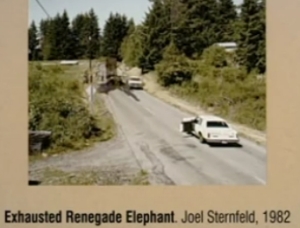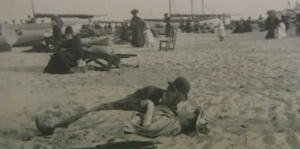Bèla Tarr
is a Hungarian film director. I´ve got most of the images from the Raw, compelling and emotionally devastating “Turin Horse”. It was his last film. I love his B&W Compositions of Entropy.










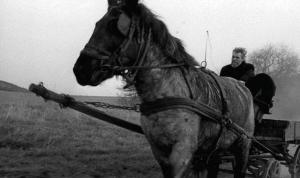

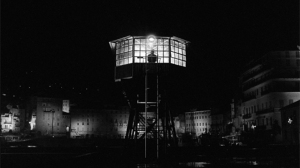



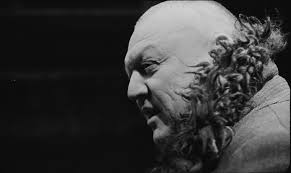



Joel Sternfeld
Henri Cartier Bresson
I love his idea of the perfect moment

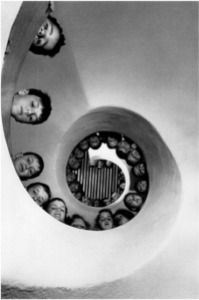



Philipp Halsmann


While living in Paris in the 1930s, photographer Philippe Halsman became acquainted with artists of the Surrealist circle. Beginning in the late 1940s, he collaborated with painter Salvador Dalí on a variety of photographic projects.
In 1951, Salvador Dali, everyone’s favorite mustachioed surrealist, teamed up with Magnum photographer Philippe Halsman to create one of the most enchanting, morbid and bizarre photographs of all time. Entitled “In Voluptas Mors,” or Voluptuous Death, the black-and-white photo stars a melange of nude women, expertly arranged to resemble a macabre skull. Dali stands next to the literal human skull, quizzically eyeing the viewer like some sort of dubious ringmaster.
Halsman and Dali originally met in 1941, and embarked on a series of collaborations over the next 30 years, including a compendium of Dali’s famed mustaches. (We’re glad to know Halsman had the same appreciation for them that we do.) Yet no work has the legacy of “Voluptuous Death,” which combines Halsman’s knack for stunning psychological portraiture with a little Dali-esque weirdness. A cache of photographs delving behind-the-scenes of the iconic artwork has recently resurfaced, showing that arranging a bunch of naked people into the shape of a skull is no easy feat.

GaryWinogrand
One of the most important photographers of the 20th century, Garry Winogrand (1928-1984) did much of his best-known work in Manhattan during the 1960s, becoming an epic chronicler of that tumultuous decade. But Winogrand was also an avid traveller and roamed extensively around the United States, bringing exquisite work out of nearly every region of the country.









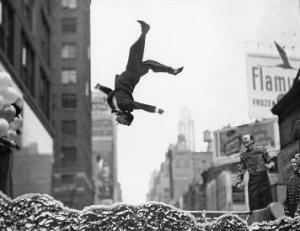
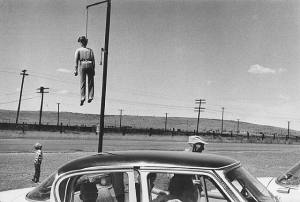
Wiliam Eggleston
 William Eggleston’s Guide was the first one-man show of colour photographs ever presented at The Museum of Modern Art, New York, and the Museum’s first publication of colour photography. The reception was divided and passionate. The book and show unabashedly forced the art world to deal with colour photography, a medium scarcely taken seriously at the time, and with the vernacular content of a body of photographs that could have been but definitely weren’t some average person’s Instamatic pictures from the family album. These photographs heralded a new mastery of the use of colour as an integral element of photographic composition. Bound in a textured cover inset with a photograph of a tricycle and stamped with yearbook-style gold lettering, the Guide contained 48 images edited down from 375 shot between 1969 and 1971 and displayed a deceptively casual, actually superrefined look at the surrounding world.
William Eggleston’s Guide was the first one-man show of colour photographs ever presented at The Museum of Modern Art, New York, and the Museum’s first publication of colour photography. The reception was divided and passionate. The book and show unabashedly forced the art world to deal with colour photography, a medium scarcely taken seriously at the time, and with the vernacular content of a body of photographs that could have been but definitely weren’t some average person’s Instamatic pictures from the family album. These photographs heralded a new mastery of the use of colour as an integral element of photographic composition. Bound in a textured cover inset with a photograph of a tricycle and stamped with yearbook-style gold lettering, the Guide contained 48 images edited down from 375 shot between 1969 and 1971 and displayed a deceptively casual, actually superrefined look at the surrounding world.
Here are people, landscapes and odd little moments in and around Eggleston’s home town of Memphis – an anonymous woman in a loudly patterned dress and cat’s eye glasses sitting, left leg slightly raised, on an equally loud outdoor sofa; a coal-fired barbecue shooting up in flames, framed by a shiny silver tricycle; the curves of a gleaming black car fender, and someone’s torso; a tiny, grey-haired lady in a faded, flowered housecoat, standing expectant, and dwarfed in the huge dark doorway of a mint-green room whose only visible furniture is a shaded lamp on an end table. For this edition of William Eggleston’s Guide, The Museum of Modern Art has made new colour separations from the original 35mm slides, producing a facsimile edition in which the colour will be freshly responsive to the photographer’s intentions.






Ed Ruscha
Ed Ruscha’s photography, drawing, painting, and artist books record the shifting emblems of American life in the last half century. His deadpan representations of Hollywood logos, stylized gas stations, and archetypal landscapes distil the imagery of popular culture into a language of cinematic and typographical codes that are as accessible as they are profound. Ruscha’s wry choice of words and phrases, which feature heavily in his work, draw upon the moments of incidental ambiguity implicit in the interplay between the linguistic signifier and the concept signified. Although his images are undeniably rooted in the vernacular of a closely observed American reality, his elegantly laconic art speaks to more complex and widespread issues regarding the appearance, feel, and function of the world and our tenuous and transient place within it.


William Klein
I love his street photography and the way how close he get to the emotions. William Klein is an American-born French photographer and filmmaker noted for his ironic approach to both media and his extensive use of unusual photographic techniques in the context of photojournalism and fashion photography.

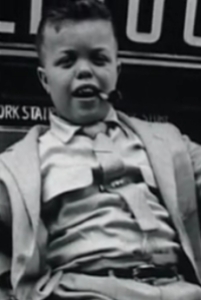






Weegee
Weegee was the pseudonym of Arthur Fellig, a photographer and photojournalist, known for his stark black and white street photography.

Tony Ray-Jones
Tony Ray-Jones, whose photographic career spanned only one decade, defined a new way of looking at his own society — with irony, nostalgia, compassion and humor. He was prolific in his short 10 years, and his point of view exerted an enormous influence on the development of British documentary art photography from the 1970s through the present.
His photographs are documentary, almost anthropological by nature, and make keen observations on contemporary British society.Ray-Jones stated that his aim as a photographer was to capture the specific British aura, the nostalgic potential and surreal humor in ordinary situations.
A five-year period in the USA and his studies at Yale University of Art were of great importance to his artistic development. During a year-long stay in New York he frequented the laboratory of Alexey Brodovitch, and had the chance to meet and draw inspiration from street photographers like Joel Meyerowitz and Garry Winogrand. In their company, his Leica in hand, he learned to melt into the multiethnic New York crowd, and to capture candid and telling photographs. He took this way of understanding documentary photography back with him to the British Isles. At the time, his photographs were considered “exotic”.
In 1968 his attempts to publish his England by the Sea album, which served as a basis for the A Day Off (which was published after his death), came to nothing – the publishers claimed that the album would raise no interest.
Even at the present moment it is not easy to call Ray-Jones a popular photographer. It was only in 2004 that his work received a full retrospective exhibition at the National Museum of Photography, Film and Television in Bradford, England.— David Allan Mellor, curator, Starmach Gallery
Timothy O sullivan
Stephen Shore
Robert Frank
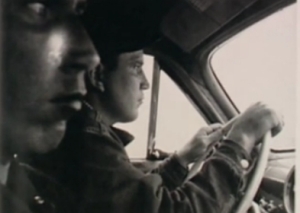
There are few single works of art that have changed the direction of their medium. In 1959, one book dramatically altered how photographers looked through their viewfinders and the way Americans saw themselves.
The Americans was the work of Swiss-born photographer Robert Frank, and the National Gallery of Art is celebrating the 50th anniversary of the book’s American debut with an exhibition. Curator Sarah Greenough says The Americans was actually reviled when it was first published in the United States.
Joel Meyerowitz
Joel Meyerowitz is an award-winning photographer whose work has appeared in over 350 exhibitions in museums and galleries around the world. Born in New York in 1938, he began photographing in 1962, becoming a “street photographer” in the tradition of Henri Cartier-Bresson and Robert Frank. However, Meyerowitz works exclusively in colour.
As an early (mid-60s) advocate of colour photography, Meyerowitz was instrumental in transforming a general resistance to colour film into an almost universal acceptance. His first book, Cape Light, is considered a classic of colour photography and has sold more than 100,000 copies over its 25-year life. He has also produced 14 other books, including Bystander: The History of Street Photography, and Tuscany: Inside the Light.
Lee Friedlander
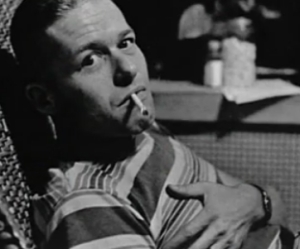
Lee Friedlander, born in 1934, began photographing the American social landscape in 1948. With an ability to organize a vast amount of visual information in dynamic compositions, Friedlander has made humorous and poignant images among the chaos of city life, dense landscape and countless other subjects. Friedlander is also recognized for a group of self-portraits he began in the 1960s, reproduced in Self Portrait, an exploration that he turned to again in the late 1990s, and published in a monograph by Fraenkel Gallery in 2000. Friedlander’s work was included in the highly influential 1967 New Documents exhibition, curated by John Szarkowski at the Museum of Modern Art. Included among the many monographs designed and published by Friedlander himself are Sticks and Stones, Lee Friedlander: Photographs, Letters From the People, Apples and Olives, Cherry Blossom Time in Japan, Family, and At Work. Friedlander was the subject of a major traveling retrospective and catalog organized by the Museum of Modern Art in 2005. In 2010, the Whitney Museum of American Art, New York exhibited the entirety of his body of work, America by Car.
Larry Clark
When it first appeared in 1971, Larry Clark’s groundbreaking book Tulsa sparked immediate controversy across the nation. Its graphic depictions of sex, violence, and drug abuse in the youth culture of Oklahoma were acclaimed by critics for stripping bare the myth that Middle America had been immune to the social convulsions that rocked America in the 1960s. The raw, haunting images taken in 1963, 1968, and 1971 document a youth culture progressively overwhelmed by self-destruction — and are as moving and disturbing today as when they first appeared. Originally published in a limited paperback version and republished in 1983 as a limited hardcover edition commissioned by the author, rare-book dealers sell copies of this book for more than a thousand dollars. Now in both hardcover and paperback editions from Grove Press, this seminal work of photographic art and social history is once again available to the general public.





